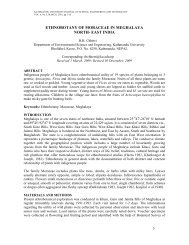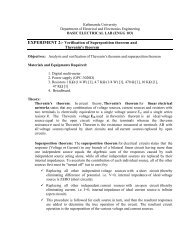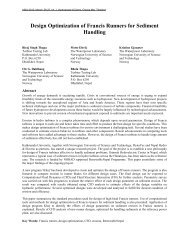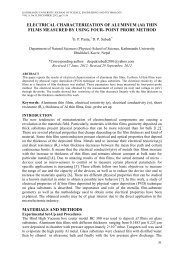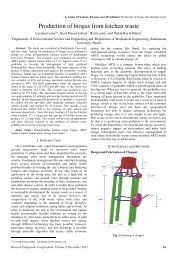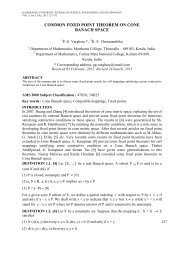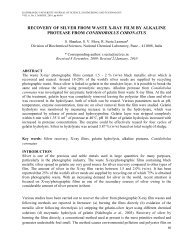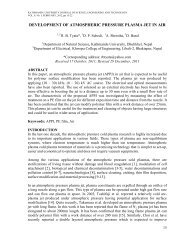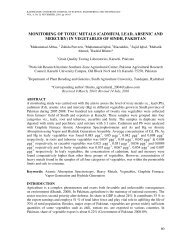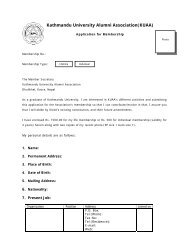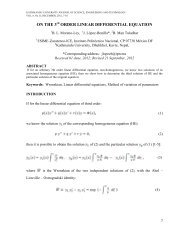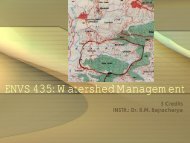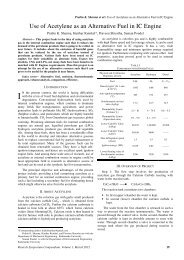ethnoveterinary practices of some plant species by ethnic
ethnoveterinary practices of some plant species by ethnic
ethnoveterinary practices of some plant species by ethnic
You also want an ePaper? Increase the reach of your titles
YUMPU automatically turns print PDFs into web optimized ePapers that Google loves.
KATHMANDU UNIVERSITY JOURNAL OF SCIENCE, ENGINEERING AND TECHNOLOGYVOL. 8, No. I, FEBRUARY, 2012, pp 44-50Fig: 1 Map <strong>of</strong> Parbat districtMATERIALS AND METHODSPresent research was conducted to three different village development committees namely,pakhapani, lunkhudeurali and phalamkhani <strong>of</strong> Parbat district during 2010. Several visits weremade to different villages <strong>of</strong> the VDCs at monthly intervals. The rural inhabitants aredependent on forests and natural vegetation for their day to day requirements. The study wasconcentrated in different villages <strong>of</strong> the VDCs and the information regarding the usage <strong>of</strong><strong>plant</strong>s for animal healing available in the local areas were collected <strong>by</strong> directly interviewingelderly knowledgeable and experienced persons <strong>of</strong> local people, who have traditionalknowledge on these <strong>ethnoveterinary</strong> <strong>plant</strong>s in the villages. The <strong>plant</strong> specimens wereidentified with the help <strong>of</strong> local floras [11, 12, 13]. Voucher specimens have been depositedin Kathmandu University, Dhulikhel, Nepal.ENUMERATIONPlant <strong>species</strong> that are known and highly regarded in <strong>ethnoveterinary</strong> <strong>practices</strong> are enumeratedwith botanical name, vernacular name in Nepali, family name and parts used for thetreatment <strong>of</strong> various ailments.45



